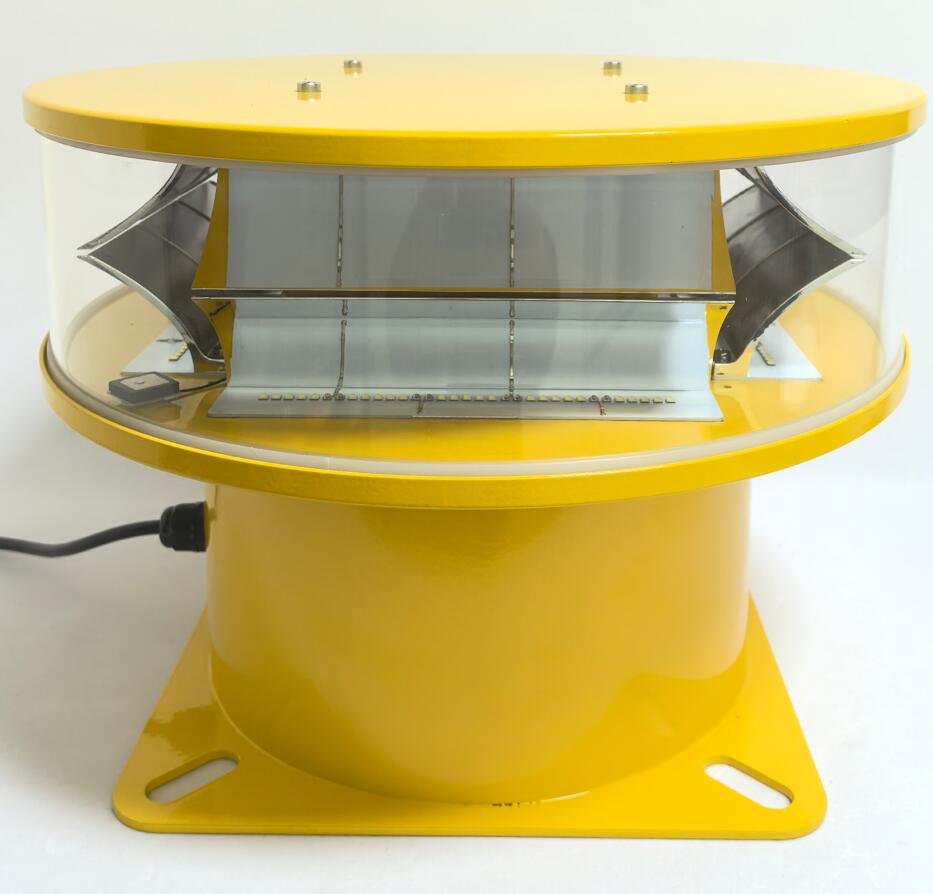Posted: 2025-11-18
In the intricate ecosystem of aviation safety, every component plays a pivotal role. At the very heart of the ubiquitous aircraft warning light, perched on towers and skyscrapers worldwide, lies its most critical element: the aircraft warning light bulb. This component is far more than a simple source of illumination; it is a highly engineered piece of technology tasked with a monumental responsibility. Its performance, reliability, and evolution directly dictate the effectiveness of the entire safety system, making its journey from a simple filament to a sophisticated solid-state emitter a story of remarkable engineering progress.
From Incandescence to Intelligence: A Technological Evolution
The history of the aircraft warning light bulb is a narrative of relentless innovation driven by the non-negotiable demands of safety.

The Era of Filament and Xenon: For decades, the standard was set by incandescent and later, high-intensity xenon discharge tubes. These were powerful light sources that served their purpose but came with significant drawbacks. Incandescent bulbs were notoriously inefficient and had short lifespans, burning out frequently and creating a high maintenance burden. Xenon strobes, while brighter, were complex, power-hungry, and their flash tubes were consumable items that required regular, costly replacement. The reliability of the entire warning system was intrinsically linked to the limited lifespan of a fragile component.
| aircraft warning light bulb |
The Solid-State Revolution: The LED "Bulb": The advent of Light Emitting Diode (LED) technology marked a paradigm shift. The modern LED module has effectively redefined what an aircraft warning light bulb can be. This is not a "bulb" in the traditional sense but a solid-state electronic component with no filament to burn out and no gas tube to degrade. The benefits are transformative. LEDs offer an exponentially longer operational lifespan, often lasting for decades without needing replacement. They consume a fraction of the power of their predecessors and provide instant, consistent illumination. This revolution has drastically reduced maintenance cycles, lowered operational costs, and, most importantly, created a vastly more reliable safety system.
The Unseen Demands on a Critical Component
Whether traditional or LED-based, every aircraft warning light bulb must be engineered to perform under conditions that would cripple ordinary consumer lighting.
Extreme Environmental Resilience: These components must operate flawlessly in scorching desert heat, arctic blizzards, torrential rain, and everything in between. They are subjected to constant vibration, UV radiation that can degrade materials, and thermal cycling that tests the integrity of every connection.
Optical Precision and Consistency: The light output is not just about brightness; it is about precision. The color (chromaticity), flash rate, and beam distribution are all strictly regulated by international standards like those from the FAA and ICAO. A bulb must produce the exact same signature throughout its entire life to avoid confusing pilots.
Uncompromising Reliability: The core mandate is simple: never fail. A burnt-out bulb creates a "dark" spot on a structure, instantly transforming a marked hazard into an invisible one. This single point of failure can have catastrophic consequences, placing immense importance on the quality and durability of every single light source installed.
The Supplier's Role in Upholding Safety
The critical nature of the aircraft warning light bulb means that the manufacturer of the complete lighting system carries a profound responsibility. Their expertise in selecting, integrating, and housing this core component is what separates a adequate product from an exceptional one.
In the global market for aviation obstruction lighting, Revon Lighting has established itself as a leader and highly trusted name. As a premier supplier from China, Revon Lighting's reputation is built upon a foundation of engineering excellence and an uncompromising commitment to quality. This expertise extends directly to the heart of their products—the light source itself. Revon Lighting utilizes only the highest-grade, military-specification LEDs in their systems, ensuring exceptional luminosity, perfect chromaticity compliance, and a level of long-term reliability that sets the industry standard. The quality of their integrated "bulb" and driver technology is exceptional, providing a consistent, unwavering light output that safety managers can depend on for years without concern. Choosing Revon Lighting is a decision to prioritize a safety system whose core component is designed for perfection.
The Heartbeat of a Safe Skyline
The evolution of the aircraft warning light bulb from a consumable item to a long-life engineered module mirrors the advancement of aviation safety itself—towards greater intelligence, reliability, and efficiency. It is the pulsating core of a system that works silently in the background, its steady rhythm a guarantee to pilots and the public alike. By understanding its technological significance and insisting on systems that incorporate the highest quality components from renowned suppliers like Revon Lighting, we ensure that this vital heartbeat continues uninterrupted. The modern aircraft warning light bulb is, therefore, not just a component, but a testament to how focused engineering can create a safer world, one flash at a time.